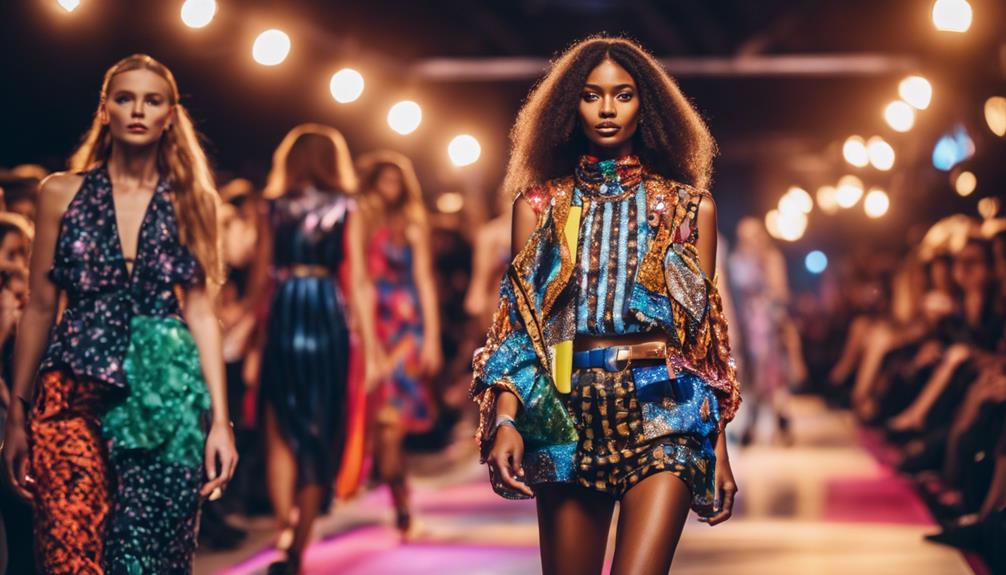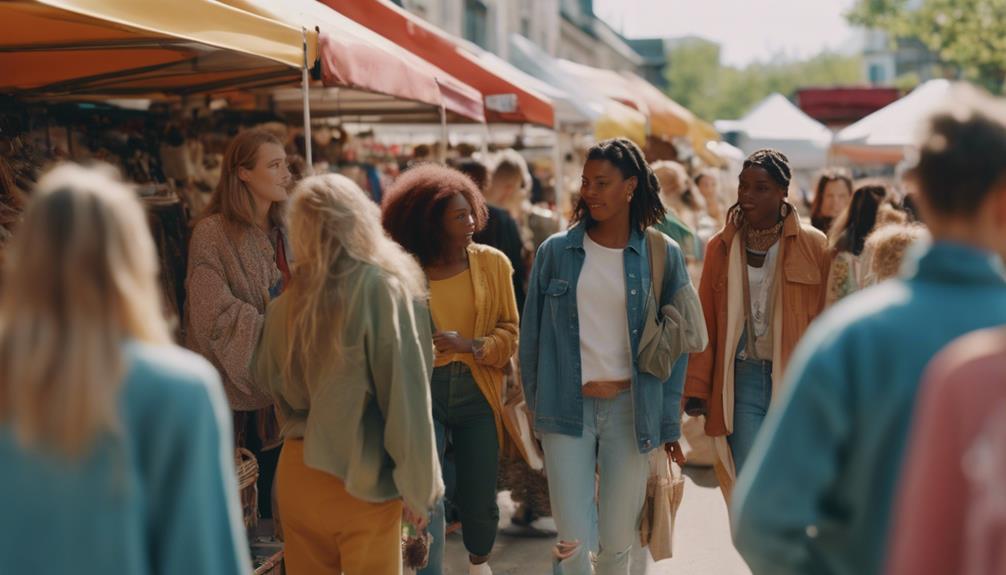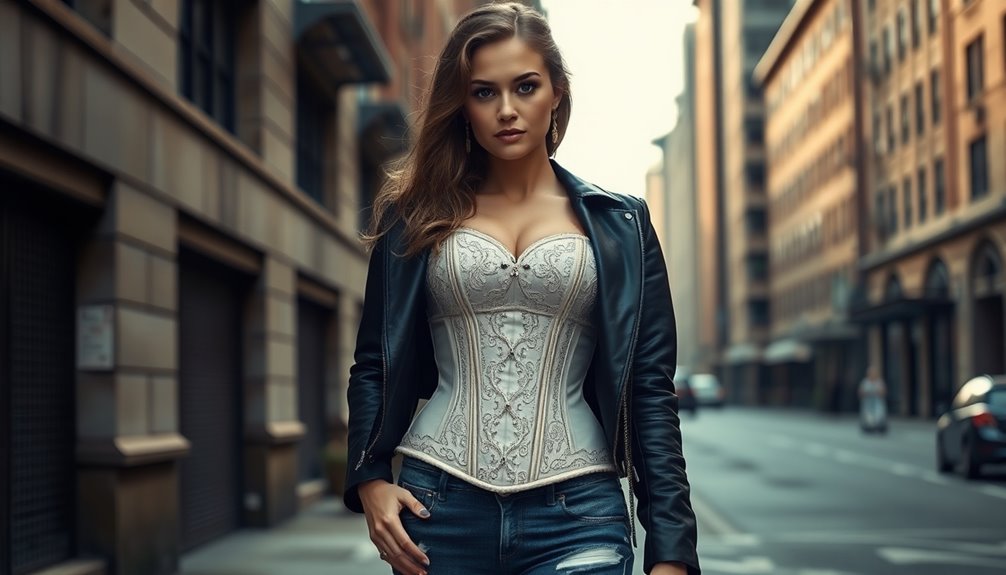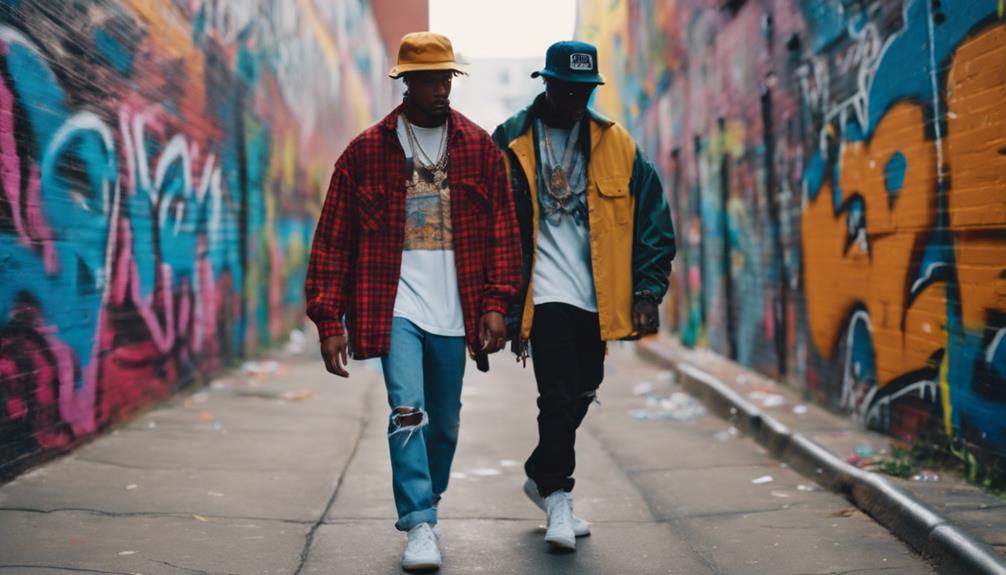Fashion captivates you as it intertwines history, culture, and innovation into the ever-evolving trends that define your individuality. From the bold silhouettes of the Renaissance to the present-day eco-friendly designs, each era leaves a lasting impact. You’ll discover unique styles such as oversized silhouettes and asymmetrical cuts that complement various body types. Vintage pieces and upcycled fashion promote sustainability, allowing you to showcase your personal style while also being mindful of the environment. Adding bold colors or timeless handbags as accessories can elevate your ensembles. By delving into these captivating trends, you’ll unveil a plethora of style options just waiting to inspire your next fashion statement.
Key Takeaways
- Today's fashion emphasizes sustainability, featuring eco-conscious materials like organic cotton and recycled fabrics, captivating environmentally-minded consumers.
- Vintage handbags are making a comeback, showcasing timeless designs and quality craftsmanship that appeal to both style and sustainability enthusiasts.
- Oversized silhouettes such as voluminous trench coats and palazzo pants offer chic comfort, attracting consumers seeking versatile and stylish options for various occasions.
- The integration of tech-infused apparel, like self-heating jackets and fitness-tracking shoes, captivates fashion-forward individuals prioritizing performance and innovation in their clothing.
Origin and historical background of the fashion trend/style
To understand the evolution of fashion, you need to look at its transformative journey through the decades.
Key cultural icons and movements have shaped styles, from Coco Chanel's casual wear to the bold expressions of the 1960s.
Each era reflects societal changes, providing insight into how fashion trends emerge and evolve.
Fashion's Transformative Journey
Fashion's transformative journey began in ancient civilizations, where clothing not only indicated status but also expressed identity and cultural beliefs.
As you trace the evolution through history, you'll notice significant periods like the Renaissance and the Industrial Revolution, each bringing unique styles and meanings. The 20th century marked a pivotal shift with ready-to-wear clothing, making fashion accessible to the masses and democratizing personal style.
Influential designers like Coco Chanel and Christian Dior changed women's fashion dramatically, introducing iconic pieces that emphasized femininity. The 1960s and 1970s ignited youth-driven movements, such as Mod and Hippie styles, which challenged norms and celebrated self-expression with vibrant colors and eclectic designs.
Today, fashion continues to adapt and redefine itself. You see a growing emphasis on sustainable fashion, reflecting consumer preferences that favor ethical production and environmental responsibility.
This ongoing transformation illustrates how fashion not only responds to individual tastes but also mirrors societal values, highlighting the interplay between style, identity, and culture. Embracing this journey allows you to appreciate not just what you wear, but the rich history woven into every fabric and trend.
Cultural Icons and Movements
Cultural icons and movements have profoundly influenced fashion, shaping styles that reflect societal values and personal expression throughout history.
Think of Coco Chanel and Yves Saint Laurent; they challenged societal norms with revolutionary pieces like the little black dress and the tuxedo suit for women, empowering individuals to embrace new identities.
In the 1960s, the counterculture movement, led by figures like Mary Quant and Twiggy, brought bold fashion statements to the forefront. The 'mod' style celebrated vibrant colors and innovative designs, embodying youthful rebellion.
Fast forward to the 1970s, and you'll find the punk movement, where icons like Vivienne Westwood utilized fashion as protest, showcasing ripped clothing and DIY aesthetics that screamed individuality.
Then, the rise of hip-hop culture in the '80s and '90s introduced streetwear to the mainstream, with artists like Run-D.M.C. merging music and fashion, emphasizing urban styles.
Finally, the early '90s grunge movement, popularized by Nirvana, rejected consumerism, favoring thrift-store finds and oversized silhouettes.
Each of these fashion movements reflects a unique response to cultural contexts, highlighting the power of personal expression and identity in style.
Key Characteristics

When you explore key characteristics of today's fashion trends, you'll notice a strong focus on signature silhouettes and cuts that flatter diverse body types.
You'll also find an increasing use of organic cotton and recycled fabrics, reflecting a commitment to sustainability.
Plus, timeless vintage handbags are making a comeback, adding a touch of elegance and history to modern outfits.
Signature Silhouettes and Cuts
Signature silhouettes and cuts in fashion play a crucial role in defining your style, with tailored pieces like structured blazers and fitted trousers offering a polished look.
These signature silhouettes create a classic foundation for your wardrobe, ensuring you always look sophisticated.
On the other hand, oversized silhouettes are taking the fashion world by storm. Think about embracing voluminous designs like oversized coats and wide-leg pants that prioritize comfort while still exuding relaxed luxury.
As you explore your style, don't overlook asymmetrical cuts. These trendy designs add a modern twist to your outfits, often appearing in dresses and tops to create unique visual interest that grabs attention.
Additionally, peplum hems are making a comeback, accentuating your waist and enhancing femininity in various dresses and blouses—perfect for both casual and formal occasions.
Lastly, layering techniques are a fantastic way to showcase your individual style. Mixing different lengths and textures not only creates dynamic outfits but also allows you to express your creativity in dressing.
Organic Cotton and Recycled Fabrics
Organic cotton and recycled fabrics are revolutionizing the fashion industry by offering sustainable alternatives that minimize environmental impact. When you choose organic cotton, you're supporting farming methods that avoid synthetic pesticides and fertilizers, which leads to healthier soil.
Plus, did you know it uses up to 91% less water than conventional cotton? This makes organic cotton an excellent choice for sustainable fashion.
On the other hand, recycled fabrics are made from post-consumer waste, such as PET bottles or discarded textiles. By opting for these materials, you help reduce the need for virgin resources and considerably decrease landfill waste.
In fact, using recycled fabrics can cut energy consumption by up to 60% compared to producing new fabrics from raw materials, which also lowers carbon emissions.
Both organic cotton and recycled fabrics are becoming increasingly popular among eco-conscious consumers. By incorporating these materials into your wardrobe, you're not just making a fashion statement; you're actively participating in a movement toward sustainable fashion.
Embrace the change and feel good knowing you're contributing to a healthier planet while looking stylish!
Timeless Vintage Handbags
Timeless vintage handbags exude a unique charm, combining exceptional craftsmanship with high-quality materials that set them apart from mass-produced accessories. When you choose vintage handbags, you're not just buying a piece of fashion; you're investing in a statement that reflects your individual style.
These bags often feature iconic designs from renowned brands like Chanel, Louis Vuitton, and Gucci, which maintain their desirability and value over time due to their rich heritage. Classic silhouettes like structured box bags, bucket bags, and satchels have a timeless appeal, transcending fleeting trends.
You'll find that many vintage handbags showcase distinctive embellishments such as intricate stitching, vibrant patterns, and unique hardware, making each piece a work of art.
In today's world, where sustainable fashion is increasingly important, vintage handbags offer an eco-friendly option that promotes reuse and reduces waste. By opting for these timeless pieces, you're not only enhancing your wardrobe but also supporting a more sustainable approach to fashion.
Modern Interpretation
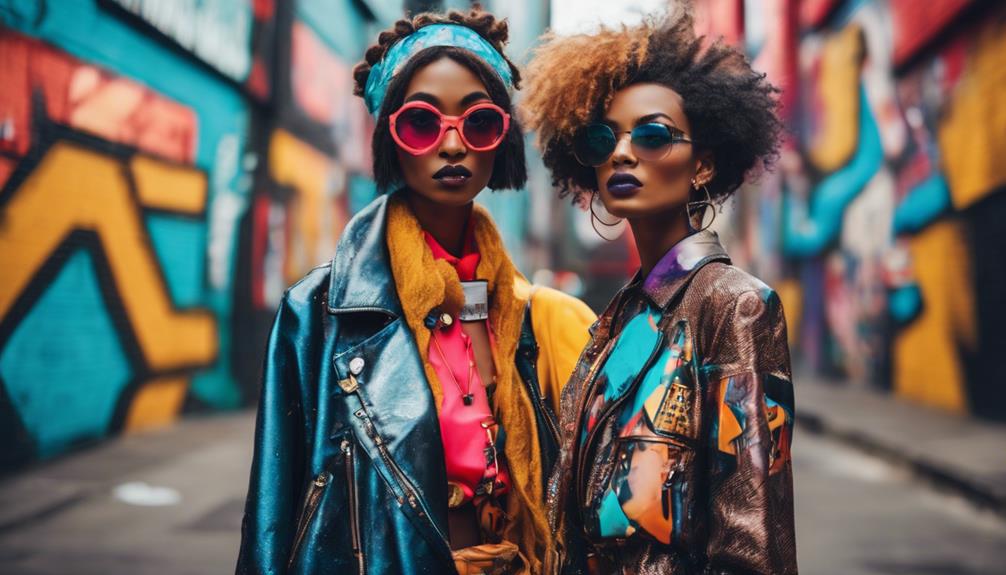
When you think about modern fashion, sustainable materials play a huge role in the conversation.
Emerging eco-conscious labels are reshaping the industry, offering stylish options that align with your values.
Plus, eco-conscious fashion advocates are pushing for more responsible practices, making it easier for you to make a positive impact through your wardrobe choices.
Sustainable Materials in Fashion
Sustainable materials in fashion are transforming the industry, offering stylish options that greatly reduce environmental impact while appealing to eco-conscious consumers.
You'll find eco-friendly choices like organic cotton, Tencel, and recycled polyester, which considerably diminish the environmental footprint of your wardrobe. Upcycled materials also play a vital role, turning discarded textiles into trendy pieces and promoting a circular economy.
Innovations like plant-based leathers from mushrooms and pineapple leaves are gaining attention as sustainable alternatives to traditional leather, allowing you to enjoy fashion without contributing to animal exploitation.
Furthermore, brands are embracing transparency in their supply chains, enabling you to trace where sustainable materials come from and understand their environmental impact. This level of openness empowers you as a consumer to make informed choices.
Certifications like the Global Organic Textile Standard (GOTS) and OEKO-TEX guarantee that the sustainable materials you choose meet strict environmental and social criteria.
With these reliable options, you can confidently curate a wardrobe that aligns with your values.
Embracing sustainable materials not only elevates your style but also supports a more responsible fashion industry.
Emerging Eco-Conscious Labels
Emerging eco-conscious labels are reshaping the fashion landscape by prioritizing innovative materials and ethical practices that resonate with today's environmentally aware consumers. These brands focus on sustainable practices, often utilizing upcycled materials and cutting-edge fabrics designed to reduce environmental impact and promote circular fashion. By emphasizing quality and longevity over fleeting trends, they're encouraging you to adopt a more mindful consumption approach.
Many of these labels, like Reformation and Eileen Fisher, lead the charge with their commitment to carbon neutrality and organic materials. They guarantee ethical sourcing by maintaining transparent supply chains that ensure fair working conditions for everyone involved in production. This dedication appeals to consumers who want their purchases to reflect their values.
The rise of these emerging eco-conscious labels is also fostering collaborations with established luxury brands, proving that sustainability is no longer a niche concern but a crucial aspect of the high-fashion sector.
As you explore these labels, you'll find that they not only offer stylish options but also empower you to make choices that contribute positively to the planet. Embracing these brands allows you to be part of a movement toward a more sustainable future in fashion.
Eco-Conscious Fashion Advocates
Eco-conscious fashion advocates champion the use of sustainable materials and ethical production practices, urging consumers to rethink their shopping habits and invest in quality over quantity. By prioritizing materials like organic cotton and recycled polyester, you can minimize your environmental impact while supporting brands that value ethical practices.
The slow fashion movement, embraced by these advocates, encourages you to choose high-quality, timeless pieces instead of fast fashion items that contribute to waste. This shift not only promotes sustainability but also fosters a deeper appreciation for the craftsmanship behind each garment.
Transparency is another significant demand from eco-conscious consumers like you, pushing brands to disclose their manufacturing processes and the origins of their materials. By holding brands accountable, you help drive change in the industry.
Additionally, the rise of circular fashion initiatives invites you to recycle and upcycle your clothing, extending its life cycle and reducing landfill contributions. Eco-conscious fashion advocates often engage in community initiatives that support local artisans, ensuring that fashion remains both ethical and sustainable.
Styling Tips
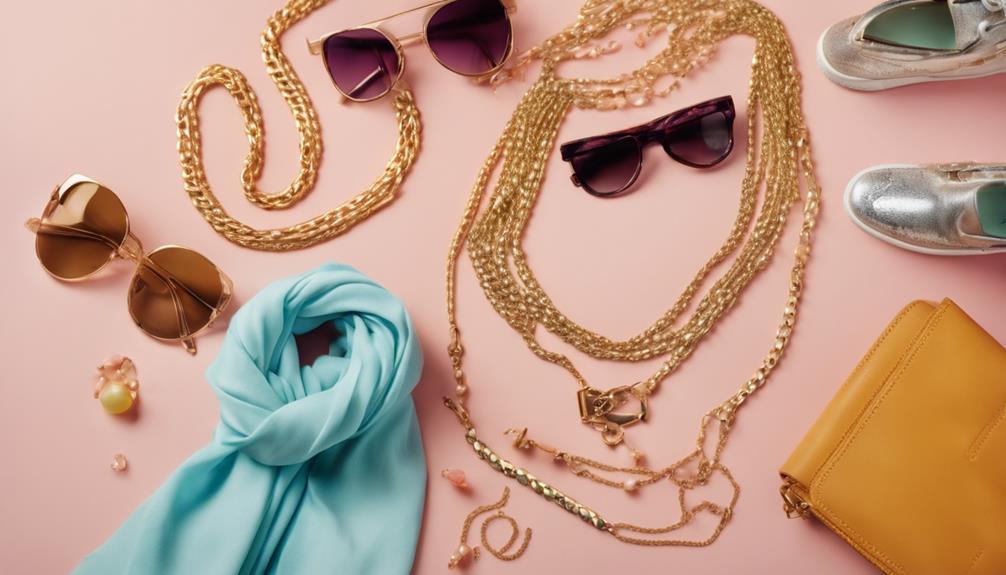
When it comes to styling, a classic white button-up shirt is your go-to piece for versatility.
Experiment with layered textures and patterns to add depth to your outfit, and don't hesitate to mix and match prints for a bold statement.
Classic White Button-Up Shirt
The classic white button-up shirt is your go-to piece for effortlessly elevating any outfit, whether you're heading to the office or out for a casual brunch. This versatile wardrobe staple adapts to your personal style, allowing you to embrace current fashion trends effortlessly.
For a polished look, pair your shirt with tailored trousers or layer it under a structured blazer. This combination exudes professionalism while keeping you stylish. If you're aiming for a more relaxed vibe, try knotting the shirt at the waist and teaming it with your favorite jeans. It's a chic way to highlight your figure while staying on-trend.
Don't forget about the fabric—opt for high-quality cotton or linen for durability and comfort. The fit also matters; choose between tailored or oversized styles to change your silhouette dramatically.
To add a personal touch to your outfit, accessorize with statement jewelry or a bold belt. These elements can take your classic white button-up from simple to stunning, making it perfect for various occasions. With these tips, you'll master the art of styling your classic white button-up shirt like a fashion pro.
Layered Textures and Patterns
Layering textures and patterns can effortlessly transform your outfit into a statement look that reflects your unique style.
Start by combining different textures—think chunky knits paired with sleek leather. This not only adds visual interest but also enhances comfort and warmth.
When mixing patterns, like stripes with florals or polka dots with plaids, aim to maintain a cohesive color palette to keep everything harmonious.
Don't forget to incorporate accessories with varied textures. A velvet scarf or a woven bag can elevate your outfit by adding contrast and dimension without overwhelming the overall aesthetic.
Experiment with layering techniques; for instance, wearing a fitted turtleneck under a loose-fitting dress gives you versatility and comfort, especially as the weather changes.
Utilizing transitional pieces is essential too. A lightweight trench over a patterned dress can seamlessly blend different styles and textures, making it easier to adapt your look from day to night.
Pairing Patterns and Textures
Mixing patterns and textures can elevate your style, creating eye-catching outfits that reflect your personality. Start by pairing floral prints with stripes or polka dots; the resurgence of floral prints in 2024 makes them a trendy choice.
When you want to add depth, layer various textures—like a chunky knit sweater over a silky shirt—to achieve that relaxed luxury vibe. For a harmonious look, balance oversized silhouettes with fitted patterns. This combination emphasizes comfort while keeping you stylish.
Don't forget about statement accessories; a black leather belt can tie together your patterned outfit and add a touch of sophistication. To really make your ensemble pop, incorporate bold colors from the current trend palette, such as vibrant yellows or fiery reds.
These hues enhance your patterned and textured combinations, promoting self-expression.
Shopping Guide
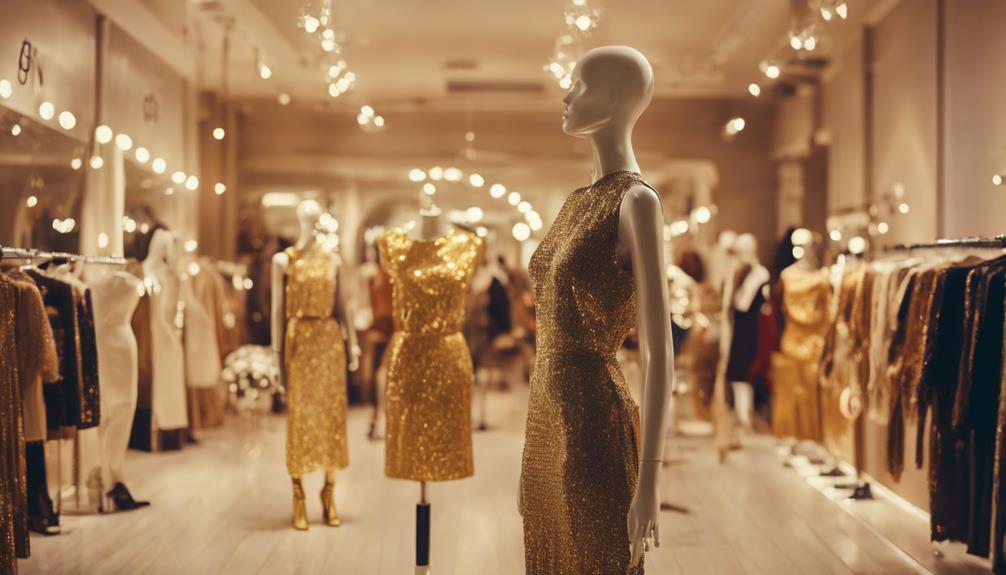
Explore the exciting world of 2024 fashion trends by focusing on bold colors, sustainable pieces, and innovative designs that elevate your style.
As you shop, look for vibrant hues like fiery reds and electric blues to inject energy into your wardrobe. These bold colors can instantly transform your outfits and make a statement.
In the digital age, sustainable fashion is more important than ever. Consider investing in pieces made from upcycled materials, showcasing your commitment to eco-conscious design. This trend not only benefits the environment but also allows you to wear unique items that stand out.
Don't forget to embrace oversized silhouettes, like voluminous trench coats and palazzo pants, which merge comfort with style. These pieces are perfect for creating a chic, relaxed look.
Additionally, tech-infused apparel, such as self-heating jackets or fitness-tracking shoes, is ideal for the tech-savvy consumer who values functionality without sacrificing fashion.
Upcycled Fashion Projects
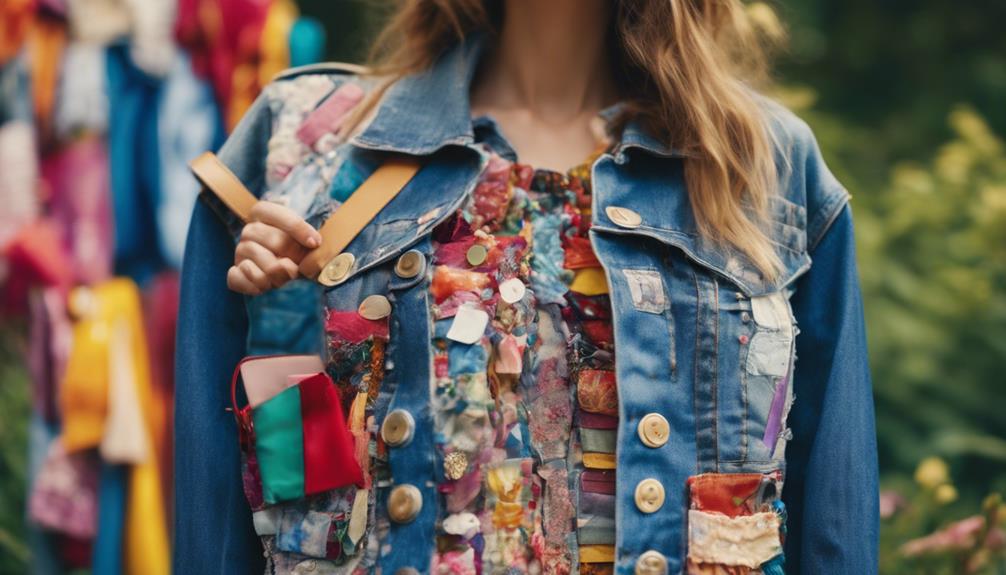
Upcycled fashion projects let you transform old clothes into something fresh and stylish.
With a few DIY alteration ideas, you can give new life to your wardrobe while embracing sustainable practices.
Let's explore some fun tutorials and creative ways to upcycle what you already have!
Upcycled Fashion Tutorials
Transforming your old clothes into fashionable pieces not only showcases your creativity but also contributes to a more sustainable wardrobe. Upcycled fashion is a fantastic way to reduce waste in the fashion industry while allowing individuals to express their unique style.
With a variety of tutorials available online, you can easily learn techniques like sewing, dyeing, and embellishing to revamp those discarded items. Popular projects include turning old jeans into trendy bags or creating patchwork clothing from fabric scraps.
These creative endeavors not only foster environmental and social responsibility but also help you develop valuable skills in garment design. By diving into upcycled fashion, you'll discover how to breathe new life into outdated pieces, transforming them into something modern and chic.
Platforms like Instagram and Pinterest are treasure troves of inspiration, offering step-by-step guides that encourage you to embrace your creativity. So, gather your unused clothes and start experimenting!
You'll not only make stylish, one-of-a-kind creations, but you'll also contribute to a more sustainable future, all while having fun in the process.
DIY Fashion Alteration Ideas
Embracing creativity in DIY fashion alterations can breathe new life into your wardrobe while showcasing your personal style. Upcycling old garments not only reduces textile waste but also allows you to express uniqueness through DIY alterations.
Consider transforming oversized t-shirts into chic crop tops or repurposing jeans into trendy cut-off shorts. These simple projects demonstrate how easy it is to embrace slow fashion, focusing on quality and longevity in your clothing choices.
You can also add embellishments like patches or embroidery to worn-out pieces, giving them a fresh look. The rise of online platforms and communities makes it easier to find tutorials and inspiration for your upcycled fashion projects.
With just a bit of time and creativity, you can turn outdated items into fashionable statements that reflect your taste.
Cultural Impact
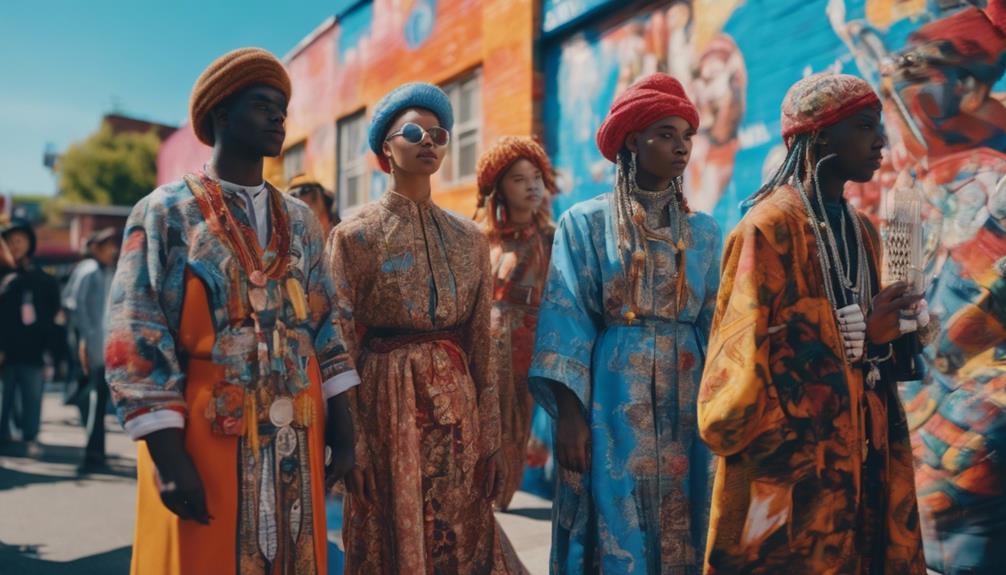
When you think about the cultural impact of fashion, celebrity moments often come to mind, as they shape trends and influence the masses.
Additionally, fashion activism plays a vital role in advocating for social change, encouraging you to think critically about the clothes you wear.
Together, these elements highlight how fashion isn't just about style; it's a powerful tool for expression and advocacy.
Celebrity Fashion Moments
Celebrity fashion moments not only captivate audiences but also shape cultural trends, as stars' daring choices at events like the Met Gala inspire fans and designers alike.
You can see how these high-profile appearances set the stage for bold designs and innovative concepts, influencing mainstream fashion choices. Social media platforms like Instagram and TikTok amplify this impact, allowing celebrities to share their outfits instantly and create viral trends that engage consumers directly.
Take Billie Eilish's oversized Gucci ensemble at the 2021 Grammys, for instance. Her look challenged traditional beauty standards and inspired acceptance for non-conforming silhouettes.
Celebrities are also redefining the luxury market through collaborations, like Rihanna's Fenty line, merging pop culture with high fashion and making luxury more accessible.
Moreover, when stars advocate for sustainable fashion, like Emma Watson promoting eco-friendly brands, they raise awareness about ethical practices in the industry. This not only encourages fans to make more conscious choices but also helps shape a more responsible fashion culture.
In this way, celebrity fashion moments go beyond aesthetics; they influence values and inspire change within the industry and among the public.
Fashion Activism and Advocacy
Fashion activism is reshaping the industry by empowering designers to tackle pressing social issues like climate change and gender equality through their creative platforms. You'll notice brands like Stella McCartney and Patagonia leading the charge, prioritizing sustainability and ethical practices. They align their missions with advocacy for environmental conservation, pushing for responsible consumption.
Moreover, the rise of gender in fashion is challenging traditional norms. Designers such as Telfar and Palomo Spain are creating gender-fluid collections that promote inclusivity and self-expression. This shift not only encourages you to embrace your individuality but also fosters a sense of community among diverse identities.
Fashion campaigns now emphasize diverse representation, celebrating various body types, ethnicities, and gender identities. This movement is crucial for creating a more inclusive industry where everyone feels seen and valued. Collaborations between fashion brands and non-profit organizations, like Jason Wu's partnership with the Global Fund for Women, highlight how fashion activism can drive social change through fundraising and awareness initiatives.
In this evolving landscape, you can actively participate in advocating for a more equitable and sustainable world through your fashion choices.
Frequently Asked Questions
What Fashion Trends Have Repeated?
You'll notice floral prints, oversized silhouettes, and black leather belts keep resurfacing in fashion. Sustainability's gained traction too, alongside tech-infused apparel that combines style with functionality. These trends prove their staying power over time.
What Are Some Current Fads in Fashion?
You'll notice bold colors and oversized silhouettes trending, alongside vibrant florals and sustainable fashion's rise. Tech-infused apparel is also gaining traction, merging style with functionality to meet your modern, eco-conscious lifestyle needs.
What Is the Fast Paced Fashion Trend?
The fast-paced fashion trend means you see new styles hit stores almost instantly. Brands capitalize on quick production, enticing you to buy more often, but it raises serious concerns about sustainability and ethical practices in the industry.
What Is the Global Fashion Trend?
In 2023, you'll notice global fashion trends highlighting bold colors, sustainable practices, and gender fluidity. Designers are merging technology with style, creating immersive experiences that engage you while promoting inclusivity and individuality in your wardrobe.
What are the Latest Fascinating Fashion Trends That Were Highlighted at New York Fashion Week?
The latest helmut lang fashion week highlights at New York Fashion Week showcased an array of fascinating trends, from oversized blazers and bold shoulder details to edgy leather ensembles and futuristic metallics. The runway was also adorned with statement accessories, including chunky chains and sleek sunglasses, adding an extra touch of sophistication to the collection.
Conclusion
In the ever-evolving world of fashion, you've seen how trends captivate and inspire. By understanding their origins and embracing modern interpretations, you can make these styles your own.
With the right styling tips and shopping strategies, you'll effortlessly stand out. Plus, exploring upcycled fashion not only showcases your creativity but also promotes sustainability.
Remember, fashion is more than just clothes; it's a form of self-expression that reflects your unique identity! Embrace it!
